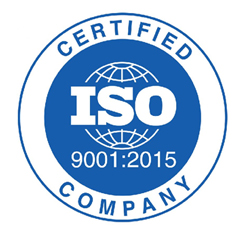The Fundamentals, Evolution, And Way Ahead For Html
Plus, HTML 4.zero adopted the Universal Character Set as a personality set. “We’ve come a good distance since HTML may barely deal with a easy page structure. HTML 5 continues to evolve and is supported by all of the largest browsers corresponding to Firefox, Chrome, Safari, Internet Explorer, Opera and Edge. HTTP is unbiased of the online safety model, often identified as the same-origin coverage. In truth, the current web safety model was developed after the creation of HTTP! Over the years, it proved helpful to raise some restrictions of this policy beneath certain constraints.
One of the key advantages of XHTML is that it offers greater compatibility with different net standards, such as CSS (Cascading Style Sheets) and JavaScript. It additionally permits net builders to create internet pages that are accessible to a wider vary of gadgets and platforms, including mobile gadgets and assistive applied sciences. Additionally, HTML four.zero launched improved support for multimedia, including the ability to embed audio and video information immediately into internet pages utilizing the tag. HTML 4.zero was the fourth version of the HyperText Markup Language (HTML), which was released in 1997.
Berners-Lee wanted to create a way for scientists to share data and collaborate more easily, so he got here up with the idea of a hypertext system that might permit users to link documents collectively. In the 1990s, the web exploded in popularity as more and more individuals started using private computer systems and connecting to the web from their houses. The World Wide Web was developed throughout this time, which made it simpler to entry and share info online.
Companies like AOL and Yahoo! were created, and the dot-com increase started. One of essentially the most important modifications in HTML5 is the introduction of Web APIs, which allow internet developers to entry system functionality like the digital camera, microphone, and accelerometer. This has led to the development html5 application development of internet purposes that can entry native gadget options and supply a more seamless user expertise. HTML is consistently pushed forward by internet builders, designers, and standards. This rule added options to reinforce website functionality and User Experience.

With new features added on an everyday basis, HTML 5.0 will remain a key player. Yet, we’ll have to wait to see what new options will convey, as there’s but to be an estimated date for its launch. This model of HTML, created in 1999, included cascading style sheets (css) which allowed aspects similar to text, color, font and backgrounds to be easily altered. Instead of these elements being included directly throughout the webpage, they’re now separated, making it far more trouble-free.
Html5: A Model New Era Of Web Development
HTML has come a long way since its creation in 1990, and it has played a vital function in the growth of the trendy web. From its humble beginnings as a easy markup language for creating internet pages, HTML has developed into a sophisticated software for creating dynamic, interactive internet purposes. Its history is a testomony to the ability of collaboration and innovation, and it will undoubtedly proceed to play a vital function in shaping the means forward for the web. The browser-specific tags stored coming, and it turned increasingly apparent that a normal needed to be discovered.

(CSS), as an example, is spotty and incomplete in all browsers. Also, each browser (rendering engine) interprets the specifications in numerous ways, leading to the everlasting criticism of pages wanting completely different in different browsers. Plus,
The HTML language first appeared in Nineteen Nineties primarily based on preexisting Standard Generalized Markup Language (SGML). It is created for particularly for marking up paperwork to use on the World Wide Web.HTML has gone by way of many adjustments. New features has been added when other features has been outdated.
Social Media? Get Serious! Understanding The Useful Constructing Blocks Of Social Media
Much extra information was transmitted over considerably extra HTTP requests and this created extra complexity and overhead for HTTP/1.1 connections. To account for this, Google carried out an experimental protocol SPDY within the early 2010s. This different method of exchanging knowledge between shopper and server amassed interest from builders working on both browsers and servers. SPDY outlined a rise in responsiveness and solved the issue of duplicate information transmission, serving as the muse for the HTTP/2 protocol. Berners Lee and Robert used SGML to describe the principles of markup language in doc type definition (DTD), the basic for the structure of the paperwork on the World Wide Web. This is the specification that we will be working with for the next decade a minimal of, so the process of its growth is comparatively gradual and considered.
- The historical past of HTML shows us that it came into existence with just eighteen tags.
- But all major browsers (Safari, Chrome, Firefox, Opera, and Internet Explorer) proceed to add new HTML5 features to their latest versions.
- place for marking the divergence in practice from the separation that Berners-Lee
- Yet, we’ll have to attend to see what new features will convey, as there’s yet to be an estimated date for its launch.
- An HTML element is a person doc part with content and markup.
- HTML began as a modest device for linking documents, laying the foundation for the history of HTML and its subsequent evolution right into a dynamic and adaptable language that helps the World Wide Web at its core.
The server transmitted how much and when to carry such restrictions to the client utilizing a model new set of HTTP headers. These were defined in specifications like Cross-Origin Resource Sharing (CORS) and the Content Security Policy (CSP). During the same time period, it became clear that an encrypted transport layer was needed. The internet was no longer a largely educational network, and as a substitute turned a jungle the place advertisers, random people, and criminals competed for as much non-public data as attainable.
To this end, the » World Wide Web Consortium (abbreviated to the W3C) was based in 1994 to standardise the language and maintain it evolving in the right direction. Their first work was code-named WILBUR, and later turned often identified as » HTML 3.2. This was a toned-down change to the existing standards, leaving lots of the massive steps ahead for later variations. Most of the extensions tags that had been introduced by Netscape (and to a lesser-extent, Microsoft) didn’t make it into these new standards. It soon caught on and have become the official commonplace in January ’97, and right now practically all browsers assist it absolutely.
Abstract Of Specification Versions
XHTML was first introduced in 2000 as a reformulation of HTML four.01 utilizing XML 1.zero syntax. It aimed to handle some of the limitations of HTML, such as its inconsistent dealing with of tags and attributes and its tendency to supply malformed or poorly structured code. XHTML follows the identical basic syntax and structure as HTML, however it is based on the stricter syntax rules of XML (Extensible Markup Language). This means that XHTML paperwork are well-formed and conform to an outlined algorithm, making them simpler to parse and validate by web browsers and different software. HTML 3.0 also added assist for brand spanking new kind parts, corresponding to drop-down menus, radio buttons, and checkboxes. These options made it easier to create complicated varieties and gather knowledge from customers.
the moveable Web browser as freeware. Marc Andreesen, who was working at the National Center for Supercomputing Applications, created a browser called Mosaic which was launched in 1993. In trendy browsers, the MIME type that is sent with the HTML document might have an effect on how the document is initially interpreted. A doc despatched with the XHTML MIME sort is predicted to be well-formed XML; syntax errors could cause the browser to fail to render it.
In such circumstances, some authors conflate the 2 names as (X)HTML or X(HTML). Most graphical email shoppers enable the utilization of a subset of HTML (often ill-defined) to offer formatting and semantic markup not available with plain text. This could embrace typographic data like colored headings, emphasized and quoted textual content, inline photographs and diagrams. Many such clients embrace each a GUI editor for composing HTML e-mail messages and a rendering engine for displaying them. The unique objective of the doctype was to enable the parsing and validation of HTML paperwork by SGML instruments based mostly on the Document Type Definition (DTD). The DTD to which the DOCTYPE refers incorporates a machine-readable grammar specifying the permitted and prohibited content material for a document conforming to such a DTD.
tried to create some standardization in HTML 3.0. But there was a lot argument over what must be included that it never got past the draft discussion stage. This added options like tables, and text flowing round images, to the official specification,
This stage added audio and video playback options and superior form controls. Among its options, it provided native Drag-and-Drop and Scalable Vector Graphics. In its first launch, there were solely a handful of growth options.
There really wasn’t a lot you can do with it bar getting some simple text onto the online. HTML 2.0 marked a major milestone within the evolution of net growth. This model launched essential components for revolutionizing web designs and paving the method https://www.globalcloudteam.com/ in which for future developments in web applied sciences. HTML documents are required to begin out with a Document Type Declaration (informally, a “doctype”). In browsers, the doctype helps to define the rendering mode—particularly whether to use quirks mode.


Leave a Reply
Want to join the discussion?Feel free to contribute!